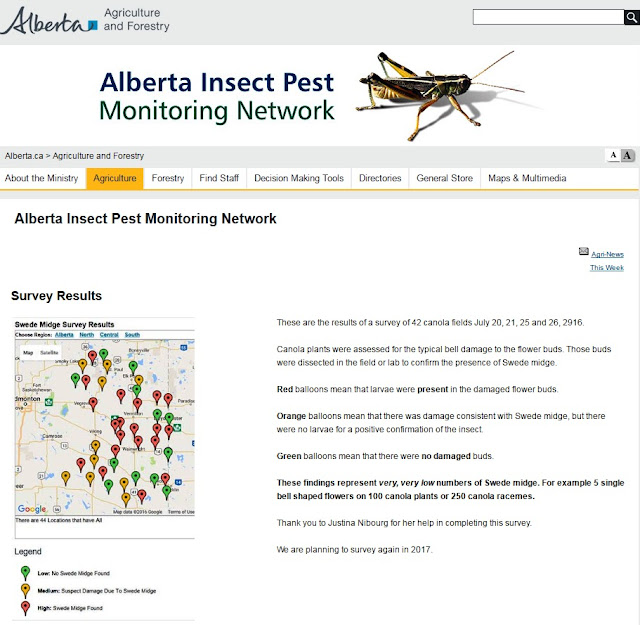This summer, Alberta Agriculture & Forestry Staff performed a survey of 42 canola sites in central Alberta on July 20, 21, 25, and 26 of 2016 and detected larvae within flower buds at multiple sites but ALWAYS AT LOW DENSITIES.
At each site, buds on canola plants were assessed for typical bell damage then dissected either in the field or later in the laboratory to determine if midge larvae were present. Results of the survey are described and mapped with the incidence of either:
1) buds with swede midge-type damage and containing larvae, or
2) buds with swede midge-type damage but containing no larvae, or
3) no buds buds showing swede midge-type damage.
Review Alberta Agriculture & Forestry's 2016 canola midge survey methods and map here. A screenshot (retrieved 07Sep2016) is below for reference.
Watch for survey results from Saskatchewan! The preliminary data indicates the distribution of midge in canola within Saskatchewan has increased in 2016 compared to 2015.
Find more swede midge information:
- Refer to the Canola Watch article by Dr. Julie Soroka or review the new Ontario fact sheet produced by Baute et al. 2016.
- Review the previous Weekly Update post for swede midge from Week 16 in 2016.
- Review the swede midge page from the new Field Guide. A screen shot is included below for reference.
Access the above swede midge page within the new "Field Crop and Forage Pests and their Natural Enemies in Western Canada: Identification and management field guide" - both English-enhanced or French-enhanced versions are available for free - download them!

